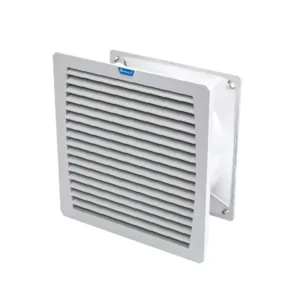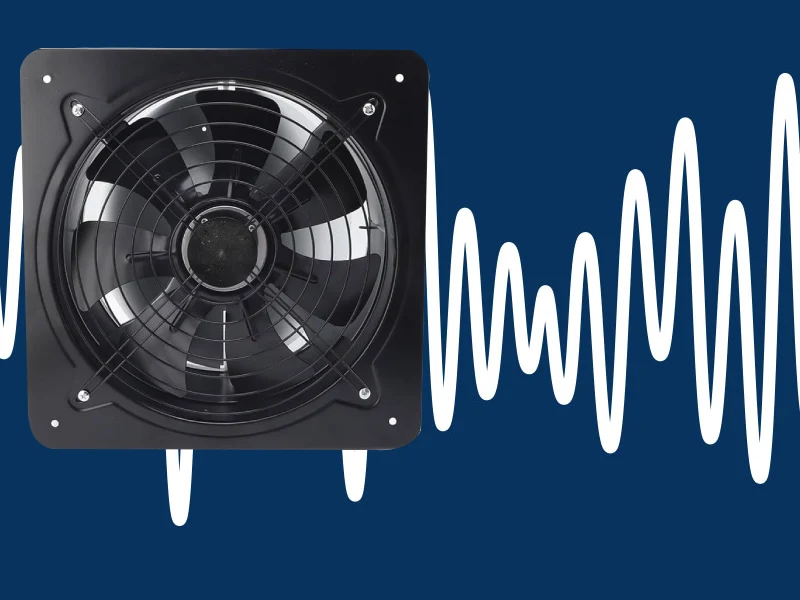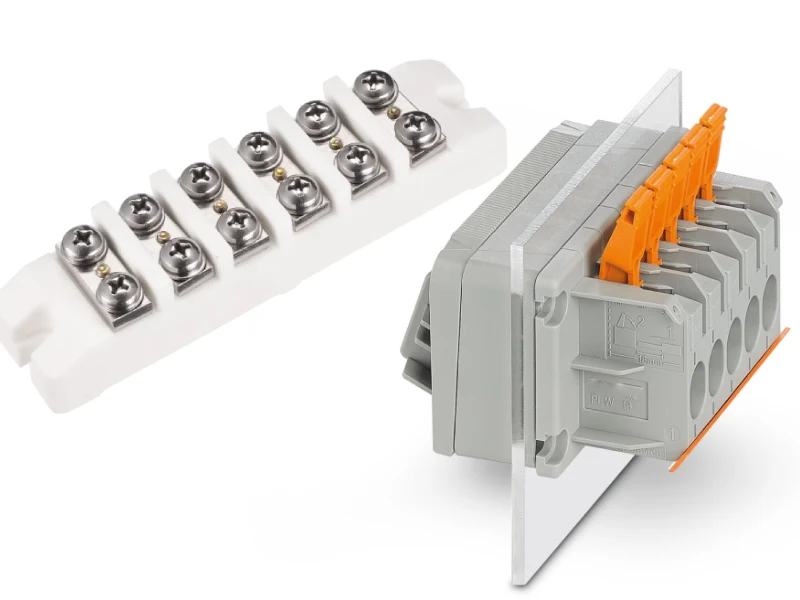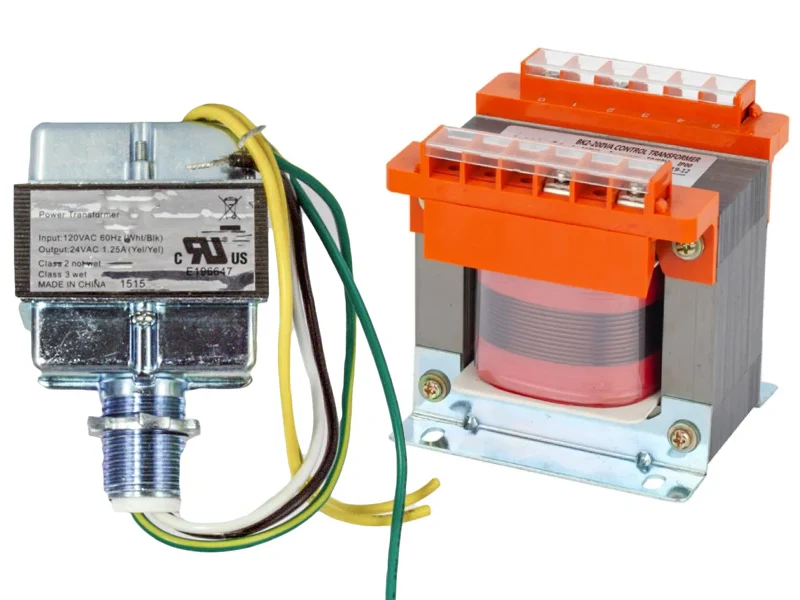Ever wondered what is ip rating and why it matters for your safety? You see ip ratings on electronics and gear all the time. These two little letters and numbers tell you how much protection your device has from dust and water. Understanding ip means you can pick products that keep you and your equipment safe. Real-world examples, like Linkewell’s solutions, show how ip ratings help you avoid accidents and improve safety every day.
Electrical Enclosure IP Ratings Explained Key Takeaways
- IP ratings show how well a product protects against dust and water, using two numbers to explain the level of protection clearly.
- Choosing the right IP rating helps keep your devices safe from damage, prevents electrical hazards, and ensures they last longer in different environments.
- Always check the IP rating before buying electronics or lighting, especially for dusty or wet places, to get reliable protection and avoid costly repairs.
What is IP Rating
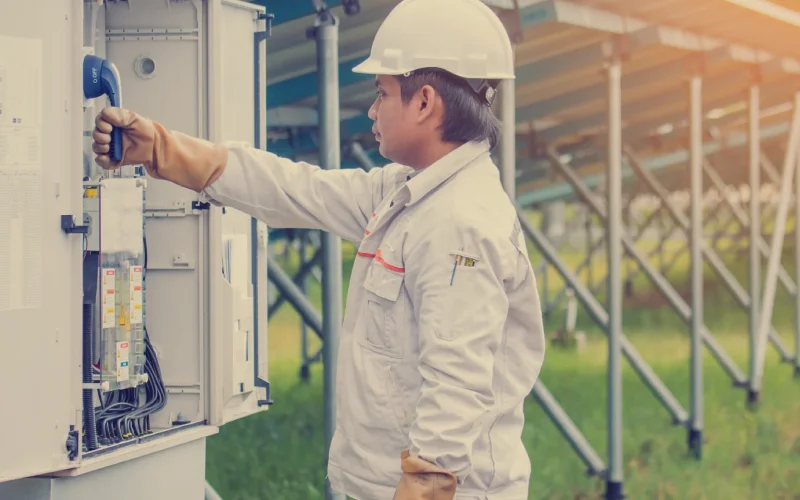
IP Rating Meaning
You probably see the term “IP rating” on electronics, lighting, or industrial gear, but what is ip rating really? IP stands for “Ingress Protection.” The official name is the Ingress Protection rating, and it comes from the International Electrotechnical Commission (IEC) standard IEC 60529. This standard tells you exactly how much protection a product has against things like dust, accidental contact, and water. Instead of guessing what “waterproof” or “dustproof” means, you get a clear, tested code.
The IP rating uses two numbers. The first digit shows how well the product keeps out solids, like dust or fingers. The second digit tells you about protection against water. For example, if you see IP65, the “6” means it is dust-tight, and the “5” means it can handle low-pressure water jets. This system helps you know exactly what kind of protection you get, so you can choose the right product for your needs.
Tip: Don’t just trust words like “waterproof.” Always check the IP rating for real protection.
How IP Ratings Work
The two-digit system in an IP rating makes it easy to compare products. Here’s a simple table to help you understand what each digit means:
| Digit Position | Protection Category | Level Range | Description |
|---|---|---|---|
| First Digit | Protection against solids | 0 to 6 | 0: No protection, 6: Dust tight (maximum protection against solids) |
| Second Digit | Protection against liquids | 0 to 9 | 0: No protection, 9: High-pressure, high-temp water jets (maximum protection in IP68/IP69K) |
You might think a higher IP rating always means better protection, but that’s not always true. Each digit stands for a different test. For example, IP67 and IP68 both offer maximum protection in ip68 for immersion in water, but IP66 is better for strong water jets. Here are some common misconceptions:
- Many people believe a higher IP rating means better protection in every situation.
- Some think IP65 means a device is waterproof, but it only protects against water jets, not immersion.
- People often forget that IP-rated devices need regular checks. Over time, seals can wear out, and the protection can drop.
- Modifying or repairing a device without following the manufacturer’s instructions can ruin its ingress protection.
The IEC tests products in labs to make sure they meet the right level. Here’s how the process works:
| Protection Type | Test Level | Description | Test Parameters |
|---|---|---|---|
| Solids Protection | 0-6 | From no protection to dust tight | Particle size, e.g., IP6X is dust tight |
| Liquids Protection | 0-9 | From no protection to immersion/high-pressure jets | Water flow, pressure, immersion depth and duration |
You can see how the levels stack up in this chart:
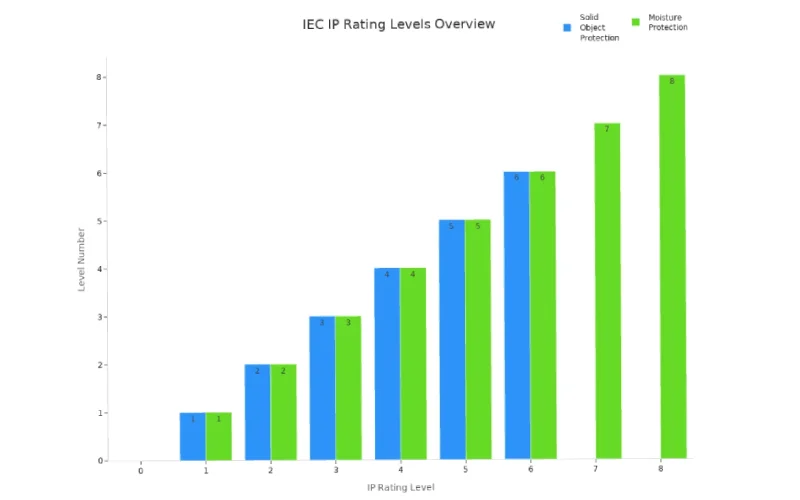
IP ratings give you more clarity than vague marketing terms. When you see “waterproof” or “dustproof,” you don’t really know what that means. With an IP rating, you know exactly what kind of ingress protection you get. This helps you avoid surprises and pick the right product for your environment.
You’ll find IP ratings everywhere, from smartphones to industrial equipment. Here are some common ones:
| IP Rating | Protection Description |
|---|---|
| IP55 | Protection in dusty environments with some water exposure |
| IP65 | Dust-tight; protected against low-pressure water jets |
| IP66 | Dust-tight; protected against strong jets of water |
| IP67 | Dust-tight; protected against temporary immersion in water |
| IP68 | Dust-tight; protected against continuous immersion in water |
| IP69K | Dust-tight; protected against high-pressure, high-temperature water jets |
If you work in harsh environments, you want the right IP rating for your needs. For example, Linkewell designs products like electrical power distribution boxes and enclosure heaters with high IP ratings, such as IP65 and IP66. These products give you reliable protection against dust and water, so your equipment stays safe and lasts longer.
When you understand what is ip rating, you can make smarter choices. You avoid overpaying for unnecessary features and keep your equipment safe. Always check the IP rating before you buy, and remember that regular maintenance keeps your protection strong.
Importance of IP Ratings
Everyday Safety
You probably don’t think about the importance of ip ratings every day, but they play a huge role in keeping you safe at home and at work. When you see an ip rating on a product, you know exactly how much protection it offers against dust, water, and accidental contact. This isn’t just about keeping your gadgets clean. It’s about real safety.
Let’s break it down. An ip rating gives you a clear idea of how well a device can keep out solids and liquids. The first digit tells you how much protection you get from dust or even a stray finger. The second digit shows the level of protection against water. If you pick a device with an ip65 rating, you get dust-tight protection and strong protection against water jets. That means you don’t have to worry about dust causing overheating or water causing a short circuit.
Here’s how ip ratings help reduce electrical hazards in your daily life:
- They provide a standard measure of protection against dust, tools, and moisture.
- Preventing dust buildup stops overheating, corrosion, and electrical arcing inside enclosures.
- Protection against water keeps out humidity, rain, and cleaning sprays that can cause short circuits.
- Devices with the right ip rating keep you safe by blocking accidental contact with live parts.
- Choosing the right ip rating for your environment means your devices last longer and you face fewer electrical risks.
You see the application of ip65 in places like kitchens, bathrooms, and outdoor spaces. Lighting fixtures with an ip65 rating can handle splashes and dust, so you don’t have to worry about safety when you clean or when it rains. Even in your garage or workshop, ip-rated products keep you and your family safe from hidden dangers.
Note: Always check the ip rating before you buy electronics or lighting for areas with dust or moisture. It’s a simple step that can prevent accidents and save money on repairs.
Industrial Perspective
An IP rating, or Ingress Protection rating, is a globally recognized standard used to classify the levels of sealing effectiveness of electrical enclosures against intrusion from foreign bodies (like tools, dust, or fingers) and moisture.
Unlike vague terms such as “waterproof”, which often lack technical clarity, IP ratings give precise and testable protection levels. For manufacturers and consumers alike, this provides a critical layer of safety assurance, particularly in industrial, outdoor, and marine environments where dust or water ingress can cause damage or pose a hazard.
This rating system is governed by the International Electrotechnical Commission (IEC) under standard IEC 60529, ensuring a universal language for durability across the globe.
Structure of IP Ratings
An IP rating typically appears as IPXY, where:
- X = level of protection from solid objects and foreign bodies (0–6)
- Y = level of protection from moisture and liquids (0–9)
For example:
- IP65 means dust-tight (6) and resistant to water jets (5).
- IPX7 means no rating for solids, but water immersion protection up to 1 meter.
Optional Letters in IP Ratings
Sometimes, an additional letter may follow, like “M” or “S”. These denote:
- M = tested while equipment was in motion
- S = tested while stationary
- F, H, W = resistance to oil, high voltage, or weather conditions
Although not common in consumer products, they appear in high-risk or industrial environments.
What Does an IP Rating Measure?
IP ratings cover three essential safety metrics:
- Resistance to user contact – preventing accidental touching of live or moving parts.
- Protection against foreign objects – dust, dirt, insects, tools, and other solid materials.
- Resistance to moisture – including rain, spray, submersion, or high-pressure washing.
These measures ensure that devices like smartphones, outdoor lights, control panels, and junction boxes remain functional and safe in harsh environments.
Complete IP Ratings Chart Explained
First Digit – Protection from Solids
| Digit | Protection Level |
|---|---|
| 0 / X | No protection provided |
| 1 | >50mm (back of hand) |
| 2 | >12.5mm (fingers) |
| 3 | >2.5mm (tools, wires) |
| 4 | >1mm (small parts, bugs) |
| 5 | Dust protected (limited ingress) |
| 6 | Dust tight (no ingress) |
Second Digit – Protection from Moisture
| Digit | Protection Level |
|---|---|
| 0 / X | No protection provided |
| 1 | Vertical drops (condensation) |
| 2 | Drops at 15° angle |
| 3 | Sprays up to 60° angle |
| 4 | Water splashing from all directions |
| 5 | Low-pressure water jets |
| 6 | High-pressure water jets |
| 7 | Temporary immersion (15 cm–1 m) |
| 8 | Continuous immersion (manufacturer defined) |
| 9K | High-pressure steam/jet cleaning |
What are IPX Ratings?
An IPX rating means one part of the protection system (either solid or water ingress) has not been rated. Examples:
- IPX7: Tested only for immersion, no solid protection claimed.
- IP5X: Rated for solid particle resistance, but not water-tested.
This doesn’t imply poor protection—it just indicates the manufacturer chose not to certify the other aspect.
Common Types of IP Rated Products

IP-rated products span a vast range, from consumer electronics like phones and smartwatches, to industrial-grade enclosures used in oil rigs, factories, and marine vessels.
They help protect:
- Internal electrical components
- Users from contact with live parts
- Equipment from weather or process conditions
Weatherproof vs Waterproof IP Ratings
Many confuse weatherproof and waterproof—but IP ratings make it easy to know what’s really protected.
- IP65: Dust-tight and resistant to water jets.
- IP66: Stronger water jet protection.
- IP67: Protected against temporary submersion.
Contrary to common belief, IPX7 is not “better” than IPX6—they are tested for different water exposure types (immersion vs jets). Choose based on your actual use case.
IP Rated Electrical Enclosures
From factories to marine decks, electrical enclosures with IP ratings are vital for protecting sensitive gear like:
- Circuit breakers
- Automation equipment
- Junction boxes
An IP66 enclosure, for instance, can withstand dust and direct hose-downs, making it ideal for food processing plants or outdoor installations.
IP Rated Enclosure Accessories
These include:
- Mounting brackets and wall fixings
- Lockable panels and access doors
- Racks, dividers, and feet for modular setups
These accessories often match or exceed the enclosure’s IP rating, maintaining system integrity.
Floor Standing IP Enclosures
Often rated IP43 to IP66, these tall units protect:
- Busbars
- Fuses
- Hydraulic/pneumatic systems
They’re common in energy distribution and automated control applications.
General Purpose IP Enclosures
Usually rated IP65+, these box-type units protect:
- Relays
- Power converters
- Signal processing units
They’re highly customizable with locking systems and internal mounting panels.
Handheld IP Rated Enclosures
Portable enclosures like voltmeter cases, IR readers, or flow gauges are built to withstand rough handling. IP65 or higher ensures:
- Dust-tight seals
- Splash or rain resistance
- Safe battery access
Instrument IP Cases and Their Functions
Used in medical, aviation, and field-testing gear, IP-rated cases range from IP40 (minimal) to IP68 (immersion safe). These cases are designed for precision protection and may include foam inserts, seals, and anti-static linings.
IP Ratings for Power Supply Cases
Power supply enclosures are often vented for heat dissipation. IP20–IP44 is common, balancing:
- Electrical safety (no finger or tool contact)
- Thermal management
- Corrosion resistance
Wall-Mount IP Boxes
Common in electrical and telecom systems, these boxes may feature:
- Transparent inspection windows
- Lockable access
- IP66–IP67 moisture and dust sealing
They’re ideal for industrial controls, metering, and remote monitoring.
Linkewell Product Protection
Recommended products
When you step into a factory, telecom room, or warehouse, the environment gets tougher. Dust swirls in the air, water sprays during cleaning, and machines run nonstop. Here, the importance of ip ratings becomes even clearer. You need products that can stand up to these challenges.
Linkewell’s electrical power distribution box and enclosure heater are perfect examples. Both come with an ip65 rating or even ip66, which means they are dust-tight and can handle powerful water jets. This level of protection is not just a bonus—it’s essential for safety and reliability in harsh settings.
Let’s look at what high ip-rated enclosures protect against in everyday and industrial settings:
| Damage Type | Protection Provided by High IP-Rated Enclosures |
|---|---|
| Solid Object Ingress | Protection against dust, dirt, sand, and accidental contact |
| Water Intrusion | Protection against rain, snow, hose spray, and even submersion |
| Corrosion and Chemicals | Extra protection in some cases against corrosion and chemical damage |
| Weather Effects | Protection from ice, humidity, and changing weather |
You want your lighting and electrical systems to work every time you flip the switch. That’s why Linkewell uses corrosion-resistant materials and special seals in their products. Their electrical power distribution box with an ip65 rating keeps dust and water out, so your circuits stay safe. The enclosure heater, electrical cabinet fan, also with an ip65 rating, protects sensitive electronics from condensation and cold, making sure your equipment runs smoothly even in damp or freezing conditions.
Factories, telecom sites, and warehouses face tough conditions:
- High humidity and moisture can cause corrosion and electrical failures.
- Dust and dirt are everywhere, so you need protection against particulate ingress.
- Water splashes and sprays happen during cleaning or from leaks.
- Lighting fixtures in these places need an ip65 rating to keep working safely.
If you choose products with a higher ip rating, you might pay a bit more upfront. But you save money in the long run. You avoid costly repairs, downtime, and replacements. Your lighting and electrical gear last longer, and you get peace of mind knowing you’ve chosen the right level of protection.
Tip: For harsh environments, always look for an ip65 rating or higher. It’s the best way to ensure safety, reliability, and long-lasting performance for your lighting and electrical systems.
Choosing the Right IP Rating
Reading IP Codes
When you look at an IP code, you see two numbers. The first number shows how well the lighting fixture keeps out dust and solid objects. The second number tells you how much protection it has against water. For example, an IP65 rating means your lighting is dust-tight and can handle water jets. You want to match the IP rating to your environment. If you work in a warehouse with lots of dust, you need strong dust protection. If you have outdoor lighting, you need even more water protection.
Here’s a quick guide to help you:
- IP44: Good for indoor lighting with some dust.
- IP65: Best for warehouse lighting with dust and water jets.
- IP67: Needed for areas with heavy rain or possible flooding.
- IP69K: Top choice for places with high-pressure cleaning.
Tip: Always check the manufacturer’s guidelines for the right IP rating for your lighting.
Linkewell in Warehouse Lighting
Choosing the right IP rating for warehouse lighting keeps your space safe and your equipment running. Indoor warehouse lighting usually needs at least IP44, but IP65 gives you better protection from dust and dirt. Outdoor warehouse lighting faces rain and splashes, so you want an IP65 rating or higher. The application of IP65 in lighting means you get complete dust protection and strong water resistance.
Here’s a table to help you compare:
| IP Rating | Dust Protection | Water Protection | Best Use Case |
|---|---|---|---|
| IP44 | Some | Splashes | Indoor warehouse lighting |
| IP65 | Complete | Water jets | Indoor/outdoor warehouse |
| IP67 | Complete | Immersion | Wet or flooded areas |
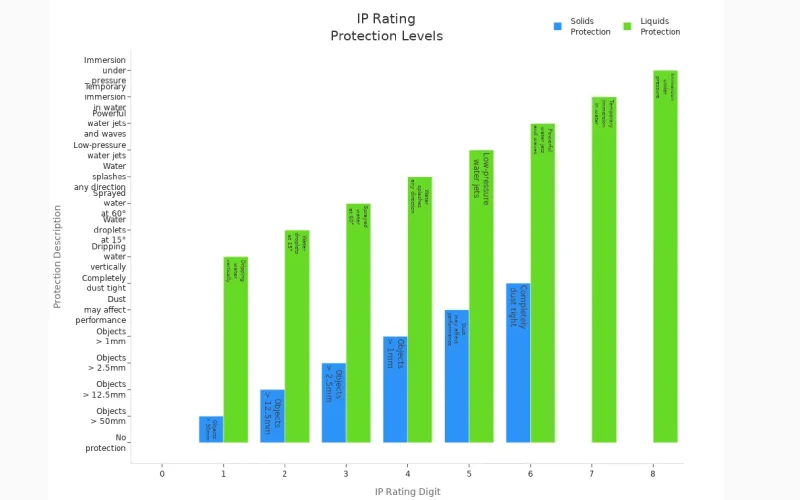
Many people make mistakes when choosing the right IP rating. They pick a lower rating to save money, but this can lead to damage and repairs. Some forget to check if the lighting will face water jets or heavy dust. Always think about where you will use the lighting and what kind of protection you need. Linkewell’s warehouse lighting with an IP65 rating gives you peace of mind and long-lasting performance.
You want real protection for your electronics and workplace. Understanding ip ratings helps you choose products that last longer and keep you safe. Linkewell’s focus on high protection standards means you get:
- Strong protection from dust and water
- Reliable performance in tough places
- Less downtime and more satisfaction
Always check the ip rating for the right level of protection.
FAQ
What does “IP65” actually mean for my equipment?
IP65 means your device is totally dust-tight and can handle water jets from any direction. You get strong protection for both indoor and outdoor use.
How do I know which IP rating I need?
Check where you’ll use the product. For dusty or wet places, pick IP65 or higher. For dry, indoor spots, IP44 usually works fine.
Can I use Linkewell’s IP65 products outside all year?
Yes! Linkewell’s IP65-rated products keep out dust and rain. You can trust them for reliable outdoor performance in every season.




